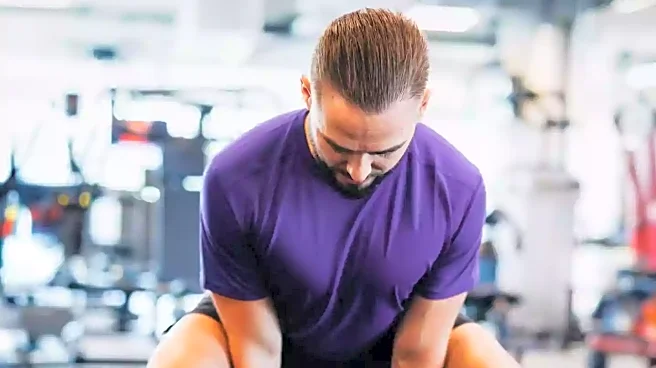What's Happening?
Recent insights from fitness experts highlight the benefits of using small and easy-to-use exercise equipment to improve bone density. Resistance and weight training are emphasized as effective methods for increasing bone density by applying stress to bones and muscles, promoting stronger bone growth. Resistance bands are particularly recommended for their effectiveness in resistance training. Additionally, weighted vests are suggested to increase bone-loading stimulus during walking or bodyweight exercises. Medical News Today advises starting with a vest without weights and gradually increasing the weight to enhance bone density or manage osteoporosis.
Why It's Important?
Improving bone density is crucial for reducing the risk of fractures, especially in individuals with osteoporosis. The use of accessible fitness equipment like resistance bands and weighted vests offers a practical approach to bone health, potentially decreasing healthcare costs associated with bone-related injuries. This development is significant for the aging population and those at risk of osteoporosis, providing them with tools to maintain mobility and independence. The emphasis on starting with minimal weight and consulting healthcare professionals ensures safety and effectiveness in these exercises.
What's Next?
As awareness of bone health grows, more individuals may adopt these recommended fitness items into their routines. Healthcare providers might increasingly advocate for resistance and weight training as preventive measures against osteoporosis. The fitness industry could see a rise in demand for adjustable weighted vests and resistance bands, prompting manufacturers to innovate and improve these products. Additionally, further research may explore the long-term benefits of these exercises on bone density, potentially influencing public health guidelines.
Beyond the Headlines
The focus on bone density improvement through exercise highlights broader health and wellness trends, emphasizing preventive care and self-management of health conditions. This approach aligns with the growing interest in personalized fitness solutions and the integration of exercise into daily life for long-term health benefits. Ethical considerations include ensuring accessibility and affordability of recommended equipment for all socioeconomic groups, promoting equitable health outcomes.











